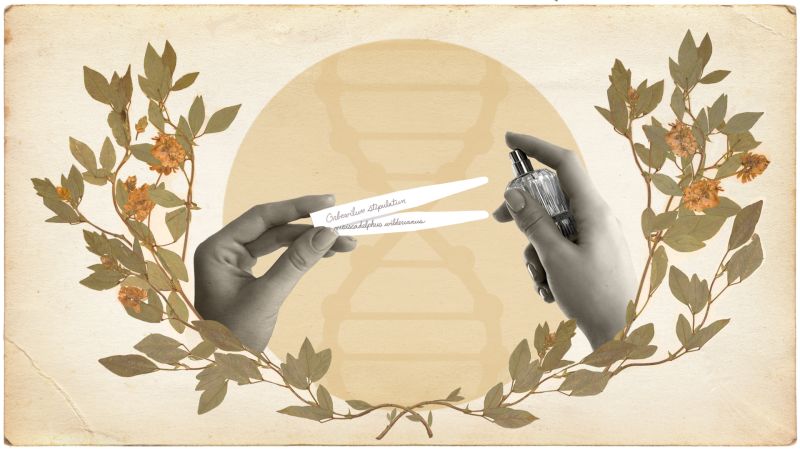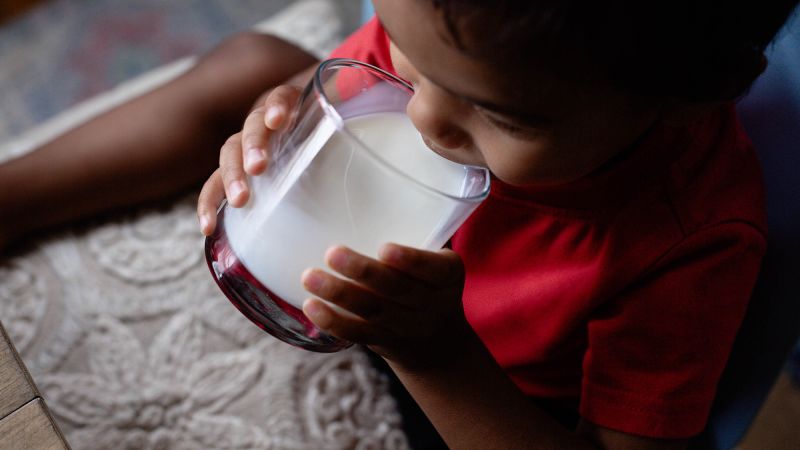Extinct Flower Fragrances: The Challenge Of Recreative Perfumery

Welcome to your ultimate source for breaking news, trending updates, and in-depth stories from around the world. Whether it's politics, technology, entertainment, sports, or lifestyle, we bring you real-time updates that keep you informed and ahead of the curve.
Our team works tirelessly to ensure you never miss a moment. From the latest developments in global events to the most talked-about topics on social media, our news platform is designed to deliver accurate and timely information, all in one place.
Stay in the know and join thousands of readers who trust us for reliable, up-to-date content. Explore our expertly curated articles and dive deeper into the stories that matter to you. Visit Best Website now and be part of the conversation. Don't miss out on the headlines that shape our world!
Table of Contents
Extinct Flower Fragrances: The Challenge of Recreative Perfumery
The world of perfumery is a captivating blend of art and science, constantly pushing boundaries. But what happens when the very source of inspiration – a unique and irreplaceable flower – disappears forever? The quest to recreate the fragrances of extinct flowers presents a fascinating and incredibly challenging problem for perfumers, one that blends historical research, cutting-edge technology, and a dash of artistic intuition.
The loss of biodiversity, including the extinction of plant species, directly impacts the potential palette of scents available to perfumers. Imagine the lost aromas of flowers known only through historical texts and botanical illustrations – a poignant reminder of what we've lost. This is the realm of recreative perfumery, a field dedicated to resurrecting these ghostly scents, often with limited information to go on.
The Difficulties of Recreative Perfumery
Reconstructing the scent of an extinct flower is far from a simple task. Perfumery relies heavily on olfactory memory and available resources. With extinct flowers, we lack the most crucial element: the flower itself. The challenge lies in piecing together clues from various sources:
-
Historical Texts and Botanical Illustrations: Ancient texts, diaries, and botanical paintings may offer descriptions of a flower's scent, albeit often vague and subjective. Terms like "sweet," "spicy," or "musky" are highly interpretive and lack the precision needed for accurate fragrance replication.
-
Chemical Analysis of Related Species: Modern analytical techniques can identify the chemical compounds responsible for a flower's scent. By analyzing closely related surviving species, perfumers can attempt to deduce the likely composition of the extinct flower's fragrance. However, even closely related species can have vastly different scent profiles.
-
Preserved Specimens: Herbarium specimens, though often lacking their original scent, may yield clues through careful analysis. Traces of volatile compounds might still be detectable, providing fragments of the lost aroma.
Technological Advancements in Scent Reconstruction
Despite the inherent difficulties, technological advancements are pushing the boundaries of recreative perfumery. Techniques like Gas Chromatography-Mass Spectrometry (GC-MS) allow for precise identification and quantification of volatile organic compounds (VOCs) in plant materials. This data is crucial in reconstructing a plausible scent profile, though interpretation and creative license remain essential aspects of the process.
Furthermore, the use of advanced computational models and artificial intelligence is starting to play a more significant role in predicting the scent profile based on limited data. These tools can analyze the chemical structures of known compounds and predict the olfactory properties of unknown ones, adding another layer of complexity and potential to the field.
Ethical Considerations and the Future of Recreative Perfumery
The recreative perfumery field also brings ethical considerations to the forefront. Accuracy is paramount, but artistic interpretation is unavoidable. The aim isn't to create a perfect replica, which is often impossible, but to provide a plausible and evocative interpretation of a lost scent. Transparency about the process and the limitations of the reconstruction is crucial.
The future of recreative perfumery hinges on collaboration between botanists, chemists, historians, and perfumers. Preserving plant biodiversity and documenting the scent profiles of existing species are vital steps in preventing future losses and enriching the field's potential. The quest to capture the ghost of a flower's fragrance continues, a testament to human curiosity and the enduring allure of lost scents.
Call to Action: Learn more about the importance of biodiversity conservation and support organizations dedicated to protecting plant species. Even small actions can contribute significantly to preventing future losses in the fragrant world.

Thank you for visiting our website, your trusted source for the latest updates and in-depth coverage on Extinct Flower Fragrances: The Challenge Of Recreative Perfumery. We're committed to keeping you informed with timely and accurate information to meet your curiosity and needs.
If you have any questions, suggestions, or feedback, we'd love to hear from you. Your insights are valuable to us and help us improve to serve you better. Feel free to reach out through our contact page.
Don't forget to bookmark our website and check back regularly for the latest headlines and trending topics. See you next time, and thank you for being part of our growing community!
Featured Posts
-
 Everything You Need To Know Detroit Grand Prix 2025 Events And Logistics
May 31, 2025
Everything You Need To Know Detroit Grand Prix 2025 Events And Logistics
May 31, 2025 -
 Global Tariff Dispute Us Court Limits Presidential Power
May 31, 2025
Global Tariff Dispute Us Court Limits Presidential Power
May 31, 2025 -
 Urgent Appeal After Dog Attack Leaves Three Seriously Hurt In Greater Manchester
May 31, 2025
Urgent Appeal After Dog Attack Leaves Three Seriously Hurt In Greater Manchester
May 31, 2025 -
 Sloane Stephens Opens Up About The Physical Toll Of Professional Tennis
May 31, 2025
Sloane Stephens Opens Up About The Physical Toll Of Professional Tennis
May 31, 2025 -
 Newark Airport Atc System Upgrades Facing Delays Officials Report
May 31, 2025
Newark Airport Atc System Upgrades Facing Delays Officials Report
May 31, 2025
Latest Posts
-
 Country Star Weighs In Charley Crocketts Public Backing Of Beyonce Amidst Ongoing Debate
Aug 23, 2025
Country Star Weighs In Charley Crocketts Public Backing Of Beyonce Amidst Ongoing Debate
Aug 23, 2025 -
 New Couple Alert Jennifer Aniston And Jim Curtiss Adorable Behind The Scenes Video
Aug 23, 2025
New Couple Alert Jennifer Aniston And Jim Curtiss Adorable Behind The Scenes Video
Aug 23, 2025 -
 Surge In St Georges And Union Jack Flags Reasons Behind The Increase
Aug 23, 2025
Surge In St Georges And Union Jack Flags Reasons Behind The Increase
Aug 23, 2025 -
 Which Fall Vaccines Do I Need A Colorado Doctors Guide
Aug 23, 2025
Which Fall Vaccines Do I Need A Colorado Doctors Guide
Aug 23, 2025 -
 Legal Battles Brew Over Marketing Of Toddler Milk Products
Aug 23, 2025
Legal Battles Brew Over Marketing Of Toddler Milk Products
Aug 23, 2025
